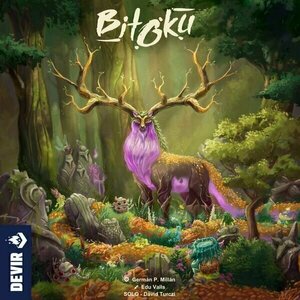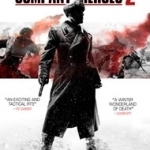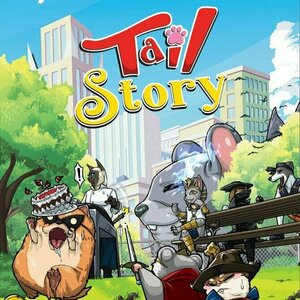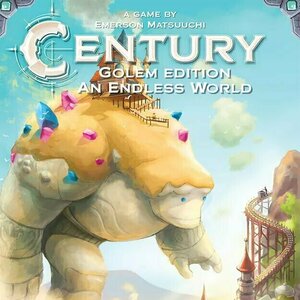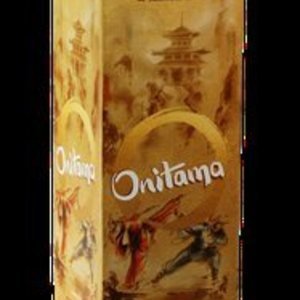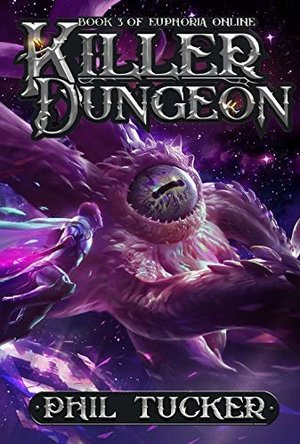Search
Search results
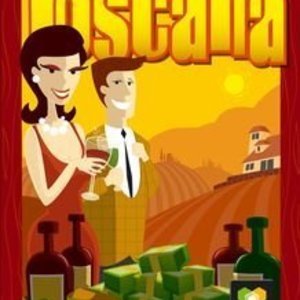
Toscana
Tabletop Game
"Toscana is an exciting game set in the competitive world of wine. You are the proud owner of a...
Boardgames Winegames
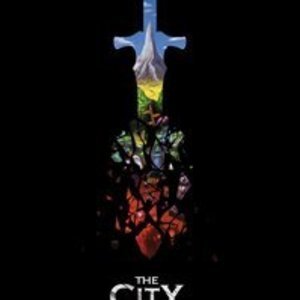
The City of Kings
Tabletop Game
This world used to be a garden full of life; from the flying Vadora to the deep-dwelling Dwarves –...
BoardGAMES 2018Games

Paint the Roses
Tabletop Game
Paint the Roses is a 2-5 player cooperative logic deduction game that automatically adapts to your...
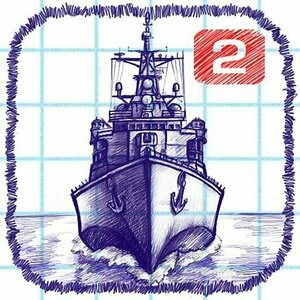
Sea Battle 2
Games
App
Sea Battle 2 is the game we’ve all known since childhood, now with new features and an extended...
Gareth von Kallenbach (980 KP) rated Company of Heroes 2 in Video Games
Jun 19, 2019
Fans of the real-time strategy World War II epic Company of Heroes were delighted when a full sequel to the game was announced. There was a bit of trepidation when publisher THQ was forced to sell off much of their assets to rival companies due to bankruptcy issues. Thankfully for the fans of the game and developer Relic Sega stepped in and acquire the franchise as well is provided to developers additional time to polish the game beyond its initial scheduled release.
For those that are not familiar with the series, the game task players to take command and construct various military units in an effort to seize key installations and strategic points, destroy enemy troops, and accomplish various strategic tasks. This is easier said than done as the enemy AI is extremely tenacious and adaptable and like battlefield situations, commanders are often forced to improvise and think on the fly one the unexpected happens.
This timeout the game is set in Russia and is told mainly through flashbacks during an interrogation of the disgraced Russian commander. Battles such as Stalingrad and other key elements of operation Barbosa are re-created and the initial battles are focused mainly on slowing the German advance as well as eliminating key resources that might be captured by the enemy.
As the game goes on, the weather becomes an new challenge as the fears Russian winter that proved to be so detrimental to the German forces is an element that must be contended with at all times. Players will not be able to send units on foot to capture very strategic elements or mission objectives without having them freeze to death. The solution to this problem is to have engineering units take a break from constructing buildings in order to create campfires. Players that are left out in the cold too long have a limited amount of time to reach the safety of a campfire or vehicle before they will freeze to death. Needing to ensure that the path to an objective is either stocked with appropriate amounts of fires or save for a vehicle to use is a key element to the strategic points of the game.
Being able to call in airstrikes as well as do more elaborate flanking maneuvers is definitely a high point of the game which adds to the strategy. You want to be very careful about massing your units in one place because to do so would invite an aerial or artillery barrage upon them. As in the previous games, players can take sanctuary in buildings which provides them ample opportunity to snipe at opposing targets. This is not without its limitations though as well-placed assaults including attacks with flamethrowers can soon turn the advantage into a disadvantage as troops may find themselves in a building collapsing around them.
Unlike other games of this type which are heavy on resource gathering to provide necessary funds for additional units, the game towards players points for capturing, holding, and destroying various strategic objectives. The better one does then the more units that will be made available to them. I really enjoy the heavy machine guns, mortar teams, and the cannon fodder conscripts squads, but what really makes the game shine is the ability to call in airstrikes and your armored units. As mentioned earlier about the difficulties in combat in the snow conditions. The game takes weather into account even to the point of providing hit points to the ice. An enemy that is attempting to bring across units supported by armor could be in for real surprise by strategically placed mine or a well-placed shell. Once at the ice becomes weak, then players can use this to their drainage to quickly dispatch units who fall through damage ice with a little bit of urging from their weapons.
Graphically the game shines and I really enjoy being able to use the mouse wheel to zoom into units and get an up close and personal look at them in action. Seeing them diligently go about their tasks be at construction or loading shells into their weaponry is not only beautiful to behold but adds to the sense of immersion. The sites of the game as well as the audio are spot on as key historical elements have obviously been paid attention to in the creation of this game. For example players talk about not seeing sugar in ages or how there are not enough weapons to go around and are instructed to simply head to the enemy and salvage what they can on the battlefield. There is also the element of brutality were troops are told that should you retreat from the enemy you’ll be shot and killed by your own commanders and that objectives must be completed regardless of the cost.
The game offers significant challenge to players of all levels and as such a skill level setting is in place which will allow you to try to find a happy medium for your style of play. There are also ample online opportunities for the game as not only can you play with your friends, you can create custom matches or to randomly assign matches which can pick you and other flesh and blood players up against the computer controlled opponents.
I especially like the ability to directly stream my gameplay to twitch TV as this is an element that we’re definitely looking to take advantage of in the future especially since live streaming is a key element of the upcoming gaming consoles as well .
The path finding in the game is very solid and although there are times when units can become a bit bogged down it is extremely minor especially for games of this type. The success or failure of missions relies solely upon your abilities as a commander. Sure there are times when brute force and overwhelming strength will ensure victory, but resources are at a premium on the Eastern front and players as mentioned earlier, often have to scrounge for resources from fallen soldiers on the battlefield. More than once I thought I was making short work of an enemy with a two-pronged attack only to have an extremely effective counterattack forced me into retreat and regroup mode. I learned during these times that having one unit feint toward an enemy locale wall flanking with two or more other units often worked out well. The enemy would be drawn to the one unit allowing me to get my other units behind them engaging enemy objectives for multiple sides.
This strategy works really well until you come across a machine gun nest and heavy armor which again forces you to improvise on the fly. Mortar and grenade units can do a good job at taking out a machine gun nest it positioned properly but I always found bathing area inflamed to be highly effective.
Regardless of what strategy you employ, Company of Heroes 2 is an extremely impressive and enjoyable game that not only provides plenty of enjoyment and excitement but shows that the series keeps getting better with each new installment.
http://sknr.net/2013/07/29/company-of-heroes-2/
For those that are not familiar with the series, the game task players to take command and construct various military units in an effort to seize key installations and strategic points, destroy enemy troops, and accomplish various strategic tasks. This is easier said than done as the enemy AI is extremely tenacious and adaptable and like battlefield situations, commanders are often forced to improvise and think on the fly one the unexpected happens.
This timeout the game is set in Russia and is told mainly through flashbacks during an interrogation of the disgraced Russian commander. Battles such as Stalingrad and other key elements of operation Barbosa are re-created and the initial battles are focused mainly on slowing the German advance as well as eliminating key resources that might be captured by the enemy.
As the game goes on, the weather becomes an new challenge as the fears Russian winter that proved to be so detrimental to the German forces is an element that must be contended with at all times. Players will not be able to send units on foot to capture very strategic elements or mission objectives without having them freeze to death. The solution to this problem is to have engineering units take a break from constructing buildings in order to create campfires. Players that are left out in the cold too long have a limited amount of time to reach the safety of a campfire or vehicle before they will freeze to death. Needing to ensure that the path to an objective is either stocked with appropriate amounts of fires or save for a vehicle to use is a key element to the strategic points of the game.
Being able to call in airstrikes as well as do more elaborate flanking maneuvers is definitely a high point of the game which adds to the strategy. You want to be very careful about massing your units in one place because to do so would invite an aerial or artillery barrage upon them. As in the previous games, players can take sanctuary in buildings which provides them ample opportunity to snipe at opposing targets. This is not without its limitations though as well-placed assaults including attacks with flamethrowers can soon turn the advantage into a disadvantage as troops may find themselves in a building collapsing around them.
Unlike other games of this type which are heavy on resource gathering to provide necessary funds for additional units, the game towards players points for capturing, holding, and destroying various strategic objectives. The better one does then the more units that will be made available to them. I really enjoy the heavy machine guns, mortar teams, and the cannon fodder conscripts squads, but what really makes the game shine is the ability to call in airstrikes and your armored units. As mentioned earlier about the difficulties in combat in the snow conditions. The game takes weather into account even to the point of providing hit points to the ice. An enemy that is attempting to bring across units supported by armor could be in for real surprise by strategically placed mine or a well-placed shell. Once at the ice becomes weak, then players can use this to their drainage to quickly dispatch units who fall through damage ice with a little bit of urging from their weapons.
Graphically the game shines and I really enjoy being able to use the mouse wheel to zoom into units and get an up close and personal look at them in action. Seeing them diligently go about their tasks be at construction or loading shells into their weaponry is not only beautiful to behold but adds to the sense of immersion. The sites of the game as well as the audio are spot on as key historical elements have obviously been paid attention to in the creation of this game. For example players talk about not seeing sugar in ages or how there are not enough weapons to go around and are instructed to simply head to the enemy and salvage what they can on the battlefield. There is also the element of brutality were troops are told that should you retreat from the enemy you’ll be shot and killed by your own commanders and that objectives must be completed regardless of the cost.
The game offers significant challenge to players of all levels and as such a skill level setting is in place which will allow you to try to find a happy medium for your style of play. There are also ample online opportunities for the game as not only can you play with your friends, you can create custom matches or to randomly assign matches which can pick you and other flesh and blood players up against the computer controlled opponents.
I especially like the ability to directly stream my gameplay to twitch TV as this is an element that we’re definitely looking to take advantage of in the future especially since live streaming is a key element of the upcoming gaming consoles as well .
The path finding in the game is very solid and although there are times when units can become a bit bogged down it is extremely minor especially for games of this type. The success or failure of missions relies solely upon your abilities as a commander. Sure there are times when brute force and overwhelming strength will ensure victory, but resources are at a premium on the Eastern front and players as mentioned earlier, often have to scrounge for resources from fallen soldiers on the battlefield. More than once I thought I was making short work of an enemy with a two-pronged attack only to have an extremely effective counterattack forced me into retreat and regroup mode. I learned during these times that having one unit feint toward an enemy locale wall flanking with two or more other units often worked out well. The enemy would be drawn to the one unit allowing me to get my other units behind them engaging enemy objectives for multiple sides.
This strategy works really well until you come across a machine gun nest and heavy armor which again forces you to improvise on the fly. Mortar and grenade units can do a good job at taking out a machine gun nest it positioned properly but I always found bathing area inflamed to be highly effective.
Regardless of what strategy you employ, Company of Heroes 2 is an extremely impressive and enjoyable game that not only provides plenty of enjoyment and excitement but shows that the series keeps getting better with each new installment.
http://sknr.net/2013/07/29/company-of-heroes-2/
Purple Phoenix Games (2266 KP) rated Tail Story in Tabletop Games
Jul 1, 2020
The saying goes, “If you can dream it, you can achieve it.” I know there were points in my life when I wanted to be a rock star, a zookeeper, or even a professional mascot. But who says that dreams only apply to people? Our beloved pets can dream too! Haven’t you ever seen a sleeping pup, legs twitching from an imaginary chase? Or caught your cat prowling around, as if on a secret mission? What do animals dream about? Well, Tail Story allows you to create dreams and achieve the impossible with your chosen pet!
Disclaimer: We were provided with a preview copy of Tail Story for the purposes of this review. Some of the components pictured are not final, and will be addressed in production. Also, I do not intend to rehash the entire rulebook, but rather provide an overview of the rules and game flow. -L
Tail Story is a competitive card game in which players are racing to become the most memorable pet in history! How? By partaking in various events and gathering a total of 4 Achievements. Here’s how it works. To setup, each player takes a player mat, and randomly draws a Queue Card. Players then get to choose a Character card – a pet from either the Canine, Feline, or Rodent & Friends type. Shuffle the Event cards, deal 15 to each player, everyone draws 5 cards to their hand, and the game is ready to begin! The player who drew Queue Card 1 is the first player, and play continues in numerical order.
Each turn consists of 5 steps: Draw, Play, Bonus, Deck Check, and End of Turn. The first step is always to Draw 1 card from your deck. In the Play Step, you choose one action to perform. Each player has 2 Action Points (AP) per turn, and those are spent here in the Play Step. All Event cards require either 1 or 2 AP to play, and the other standard actions in the Play Step require either 0 or 1 AP to perform (Check out the Reference Cards pictured below to see the possible actions). After performing 1 action, you move to the Bonus Step, where a player may choose to activate a Bonus ability. The Deck Check step is next. All players count how many cards remain in their Draw piles. If all decks still have at least 1 card, you jump back to the Play Step and perform another action. If any deck is out of cards, that player reshuffles their discard pile, and places a card from their hand face-down on their player mat to signify that they have collected an Achievement. Even if another player collects an Achievement on your turn, play then returns to you, and you jump back to the Play Step again. The last step is the End of Turn – a player decides to be done and ends their turn, discarding their hand down to 5 cards. The game ends when a player has collected their 4th Achievement.
Here’s a neat twist though – whenever you play a card, any opponent can choose to play a Stop card to prevent you from performing that action! And then, if you have a Stop card too, you could play it to cancel out their Stop card. This twist adds a strategic and competitive element to the game that elevates it to the next level. There’s a fun little element of role-play too that encourages you to get into your animal character – I’ll leave that for you to discover on your own!
I know that seems like quite a lot, but once you get into the swing of things, Tail Story plays pretty quickly. One thing I particularly like about this game is that it requires a decent amount of strategy. Everyone is racing to get through their Draw decks and collect Achievements, while at the same time hindering the progress of their opponents. Are you willing to risk a valuable Stop card to cancel the action of an opponent and hope that they don’t play a Stop card back to you? Should you play a card that could activate your Bonus ability now or wait for your next action to pull a fast one over on your opponents? Your strategy has to be adjustable on the fly depending on what cards your opponents are playing. There is no single right strategy to win, and the riskiness makes the game more exciting and engaging.
Another thing I really like about Tail Story is that there are really only 4 different Event cards that can be played. Yes, the artwork may vary, but ultimately the actions are the same. They rely on key text and color coding to communicate their uses, and after a few rounds, recognizing those effects is easy. One thing I wish is that the reference cards had these effect explanation instead of only being listed in the rulebook. Just for a quick glance if you need a reminder instead of having to look back in the rules for the full text. The reference cards do have the Turn Steps and possible Actions on them, which are helpful – don’t get me wrong!
I would recommend Tail Story at the higher player counts for maximum enjoyment. With only 2 players, it feels like it drags on a bit because it is only a back-and-forth game. With 3-4 players, you have more opponents with which to interact, and playing cards against others doesn’t feel as targeted and keeps the game play more light-hearted than cut-throat.
Let’s talk about components. As I mentioned earlier, this is only a preview copy of the game, so some elements are still not finalized. The player mats are only paper right now, but I anticipate that they will be sturdier in final production. That being said, the information on the player mats is awesome. They provide enough information to understand where everything goes, while not being so wordy that they are confusing. I am excited to see what kind of color scheme they come up with for the player mats, to match the artwork of the cards. On to the cards – they are amazing. For starters, the cards are nice, sturdy, and thick. Definitely a game that will not easily succumb to bent corners or torn cards. The actual artwork of the cards is perfect. Each card is detailed, colorful, and appropriate for their respective card names. Probably the coolest part of the cards is that they all have a holographic finish on them. This really makes the artwork pop and makes you admire every card instead of just reading the text. That being said, the holographic finish makes the cards stick together a little more – not a huge detriment, but something to be aware of and careful with when drawing or playing cards! The game box is a cute little box with a magnet closure that is perfect for easy transportation.
Overall, I would say that I love Tail Story. It’s fun, fast-paced, strategic, and exciting. Being able to choose from 3 Character types (Canine, Feline, Rodent & Friends) gives you the opportunity to play a different game, with a different strategy, every time. With more plays, the special text of cards is engrained in your head, which means that it can play even faster and with no interruptions to check rules. It’s definitely a memorable game, and one that I can see myself pulling out often on game nights. I am excited to see this campaign launch, and for the sake of all animal dreams out there, you should check it out!
Disclaimer: We were provided with a preview copy of Tail Story for the purposes of this review. Some of the components pictured are not final, and will be addressed in production. Also, I do not intend to rehash the entire rulebook, but rather provide an overview of the rules and game flow. -L
Tail Story is a competitive card game in which players are racing to become the most memorable pet in history! How? By partaking in various events and gathering a total of 4 Achievements. Here’s how it works. To setup, each player takes a player mat, and randomly draws a Queue Card. Players then get to choose a Character card – a pet from either the Canine, Feline, or Rodent & Friends type. Shuffle the Event cards, deal 15 to each player, everyone draws 5 cards to their hand, and the game is ready to begin! The player who drew Queue Card 1 is the first player, and play continues in numerical order.
Each turn consists of 5 steps: Draw, Play, Bonus, Deck Check, and End of Turn. The first step is always to Draw 1 card from your deck. In the Play Step, you choose one action to perform. Each player has 2 Action Points (AP) per turn, and those are spent here in the Play Step. All Event cards require either 1 or 2 AP to play, and the other standard actions in the Play Step require either 0 or 1 AP to perform (Check out the Reference Cards pictured below to see the possible actions). After performing 1 action, you move to the Bonus Step, where a player may choose to activate a Bonus ability. The Deck Check step is next. All players count how many cards remain in their Draw piles. If all decks still have at least 1 card, you jump back to the Play Step and perform another action. If any deck is out of cards, that player reshuffles their discard pile, and places a card from their hand face-down on their player mat to signify that they have collected an Achievement. Even if another player collects an Achievement on your turn, play then returns to you, and you jump back to the Play Step again. The last step is the End of Turn – a player decides to be done and ends their turn, discarding their hand down to 5 cards. The game ends when a player has collected their 4th Achievement.
Here’s a neat twist though – whenever you play a card, any opponent can choose to play a Stop card to prevent you from performing that action! And then, if you have a Stop card too, you could play it to cancel out their Stop card. This twist adds a strategic and competitive element to the game that elevates it to the next level. There’s a fun little element of role-play too that encourages you to get into your animal character – I’ll leave that for you to discover on your own!
I know that seems like quite a lot, but once you get into the swing of things, Tail Story plays pretty quickly. One thing I particularly like about this game is that it requires a decent amount of strategy. Everyone is racing to get through their Draw decks and collect Achievements, while at the same time hindering the progress of their opponents. Are you willing to risk a valuable Stop card to cancel the action of an opponent and hope that they don’t play a Stop card back to you? Should you play a card that could activate your Bonus ability now or wait for your next action to pull a fast one over on your opponents? Your strategy has to be adjustable on the fly depending on what cards your opponents are playing. There is no single right strategy to win, and the riskiness makes the game more exciting and engaging.
Another thing I really like about Tail Story is that there are really only 4 different Event cards that can be played. Yes, the artwork may vary, but ultimately the actions are the same. They rely on key text and color coding to communicate their uses, and after a few rounds, recognizing those effects is easy. One thing I wish is that the reference cards had these effect explanation instead of only being listed in the rulebook. Just for a quick glance if you need a reminder instead of having to look back in the rules for the full text. The reference cards do have the Turn Steps and possible Actions on them, which are helpful – don’t get me wrong!
I would recommend Tail Story at the higher player counts for maximum enjoyment. With only 2 players, it feels like it drags on a bit because it is only a back-and-forth game. With 3-4 players, you have more opponents with which to interact, and playing cards against others doesn’t feel as targeted and keeps the game play more light-hearted than cut-throat.
Let’s talk about components. As I mentioned earlier, this is only a preview copy of the game, so some elements are still not finalized. The player mats are only paper right now, but I anticipate that they will be sturdier in final production. That being said, the information on the player mats is awesome. They provide enough information to understand where everything goes, while not being so wordy that they are confusing. I am excited to see what kind of color scheme they come up with for the player mats, to match the artwork of the cards. On to the cards – they are amazing. For starters, the cards are nice, sturdy, and thick. Definitely a game that will not easily succumb to bent corners or torn cards. The actual artwork of the cards is perfect. Each card is detailed, colorful, and appropriate for their respective card names. Probably the coolest part of the cards is that they all have a holographic finish on them. This really makes the artwork pop and makes you admire every card instead of just reading the text. That being said, the holographic finish makes the cards stick together a little more – not a huge detriment, but something to be aware of and careful with when drawing or playing cards! The game box is a cute little box with a magnet closure that is perfect for easy transportation.
Overall, I would say that I love Tail Story. It’s fun, fast-paced, strategic, and exciting. Being able to choose from 3 Character types (Canine, Feline, Rodent & Friends) gives you the opportunity to play a different game, with a different strategy, every time. With more plays, the special text of cards is engrained in your head, which means that it can play even faster and with no interruptions to check rules. It’s definitely a memorable game, and one that I can see myself pulling out often on game nights. I am excited to see this campaign launch, and for the sake of all animal dreams out there, you should check it out!
Purple Phoenix Games (2266 KP) rated Century: Golem Edition - An Endless World in Tabletop Games
May 5, 2021
If you’ve read our reviews on the first 2 games of the Century: Golem Edition games, then you will know that we are big fans. The art and theme really drew us in, and the gameplay is what keeps us coming back for more. Now that the third and final game has dropped, how does it fit in with its predecessors? Is it the finale we were hoping for? Or does it leave us yearning for the OG Century Golem? Keep reading to find out!
Disclaimer: This game comes with rules to incorporate any/all of the Century Golem games into one bigger game. In this review, I will only be discussing the stand-alone final game in the Century Golem trilogy. -L
Century: Golem Edition – An Endless World (referred to as just An Endless World for this review) is a game of set collection and worker placement in which players are trying to earn the most points by the end of the game. To setup the game, follow the instructions outlined in the rules, dependent upon your player count. Each player begins the game with 6 Trader meeples (or 7 in a 2-player game) in their supply, and a specified number/type of crystals. The game is now ready to begin!
On your turn, you will have 2 options: Work or Rest. To Work, you will first select a location square on the board. You may not choose a location where you already have Traders, or that has an Exploration tile. You will then place Traders from your supply onto the chosen location – the number of Traders required is printed on the location. If the location is unoccupied, simply place the required number of Traders. If the location is occupied by an opponent, you may place Traders there, but you must match the opponents Traders, plus an additional Trader, to take control of the location. Any opposing Traders ousted in this manner are returned to their players’ supply. Once you have placed Traders on a location, you can then perform the action listed on that location. Action options are: producing gems, upgrading gems, trading gems, or collecting Point cards/bonus tokens. If you cannot or do not want to use a location on your turn, you can Rest. To Rest, you will collect all of your Traders from the board and place them back into your supply.
Point cards can provide immediate, ongoing, or end-game benefits for players. Help cards allow you to place 1 fewer Trader than required on certain locations. Tool cards give players an additional gem of a specified color when they place Traders on corresponding locations. New Trader cards allow players to add either 1 or 2 more Traders to their supply, thus increasing their ability to play each ’round’ before needing to Rest. Finally, Exploration cards allow the player to select an Exploration token from the board. Any time an Exploration token is claimed, that location is now ‘uncovered’ and can be used for the remainder of the game. Bonus tokens grant end-game points based upon sets of icons collected, number of Traders in your supply, or simply straight-up points.
The game continues in this fashion, alternating turns, until a player has collected their 8th Point card. The current round is played out, and then points are counted. Points are earned through Point cards, bonus tiles, Exploration tiles, and any remaining gems in your supply. The player with the highest score wins!
One thing I really like about worker placement games is that the actual gameplay is pretty logical and straight-forward. Place your worker, perform action. And An Endless World is no exception to that. Of course, how you decide to play all comes down to your strategy, and again, An Endless World has tons of options for players. Maybe you want to just get 8 Point cards as quickly as possible and call it a day. Or perhaps you want to maximize your bonus tokens and eke out as many points from those as possible. Or maybe you even just want to keep your opponent(s) from achieving their goals. You can play this game so many different ways, and you can totally adapt and change strategy mid-game if you so choose. Each game feels unique and new, and I have yet to tire from this gameplay.
An Endless World is a worker placement game, but there is one factor that I find extremely unique for the mechanic. Usually, in worker placement games, once a worker has occupied a location, it remains there until the player chooses to recover their workers. An Endless World offers players the chance to oust opponents from locations, by placing the same number plus 1 additional worker. I just think this is super neat, because it means that you can’t just ‘block’ a location from everyone. If someone really wants that location, and they have the workers, they can get to that location. Also, along those lines, since ousting a player from a location means you have to match their workers plus an additional worker, you have to decide if you want to risk dedicating that many workers to a single location. You might reaaaaally want to perform that action, but for the cost of 4 Traders, is it worth it at this moment? Could those workers better be used on different locations and you just snatch your desired location on a future turn? All part of your strategy for the game, and definitely keeps all players engaged.
Let me touch on components for a minute. As with the other Century Golem games, An Endless World is extremely well-produced. The gems are the same quality, the cards are nice, thick, and clear to read, and the cardboard tokens are nice and sturdy. Plan B Games has hit the mark on this trilogy of games, and they truly are a pleasure to play. Obviously, the artwork and theme consistency throughout the Century Golem trilogy has been really satisfying, but that also carries over into the gameplay. All 3 games use much of the same iconography, so honestly learning An Endless World was super fast and easy for me. That uniformity is extremely user-friendly and is a huge plus for me.
So I guess you can see from my score and from reading this review that I am a huge fan of An Endless World. The final game of this trilogy is a home run for me, and I just keep thinking about what strategy I want to try in my next game. That in and of itself is an indication of a great game – thinking about it even when you’re not playing it! I have yet to try the variants that include the other 2 Century Golem games, and I am very much looking forward to integrating them all into one giant and (hopefully) awesome Century Golem saga. Purple Phoenix Games gives this one an expansive 16 / 18. Give it a shot, even if you haven’t played the other Century Golem games!
Disclaimer: This game comes with rules to incorporate any/all of the Century Golem games into one bigger game. In this review, I will only be discussing the stand-alone final game in the Century Golem trilogy. -L
Century: Golem Edition – An Endless World (referred to as just An Endless World for this review) is a game of set collection and worker placement in which players are trying to earn the most points by the end of the game. To setup the game, follow the instructions outlined in the rules, dependent upon your player count. Each player begins the game with 6 Trader meeples (or 7 in a 2-player game) in their supply, and a specified number/type of crystals. The game is now ready to begin!
On your turn, you will have 2 options: Work or Rest. To Work, you will first select a location square on the board. You may not choose a location where you already have Traders, or that has an Exploration tile. You will then place Traders from your supply onto the chosen location – the number of Traders required is printed on the location. If the location is unoccupied, simply place the required number of Traders. If the location is occupied by an opponent, you may place Traders there, but you must match the opponents Traders, plus an additional Trader, to take control of the location. Any opposing Traders ousted in this manner are returned to their players’ supply. Once you have placed Traders on a location, you can then perform the action listed on that location. Action options are: producing gems, upgrading gems, trading gems, or collecting Point cards/bonus tokens. If you cannot or do not want to use a location on your turn, you can Rest. To Rest, you will collect all of your Traders from the board and place them back into your supply.
Point cards can provide immediate, ongoing, or end-game benefits for players. Help cards allow you to place 1 fewer Trader than required on certain locations. Tool cards give players an additional gem of a specified color when they place Traders on corresponding locations. New Trader cards allow players to add either 1 or 2 more Traders to their supply, thus increasing their ability to play each ’round’ before needing to Rest. Finally, Exploration cards allow the player to select an Exploration token from the board. Any time an Exploration token is claimed, that location is now ‘uncovered’ and can be used for the remainder of the game. Bonus tokens grant end-game points based upon sets of icons collected, number of Traders in your supply, or simply straight-up points.
The game continues in this fashion, alternating turns, until a player has collected their 8th Point card. The current round is played out, and then points are counted. Points are earned through Point cards, bonus tiles, Exploration tiles, and any remaining gems in your supply. The player with the highest score wins!
One thing I really like about worker placement games is that the actual gameplay is pretty logical and straight-forward. Place your worker, perform action. And An Endless World is no exception to that. Of course, how you decide to play all comes down to your strategy, and again, An Endless World has tons of options for players. Maybe you want to just get 8 Point cards as quickly as possible and call it a day. Or perhaps you want to maximize your bonus tokens and eke out as many points from those as possible. Or maybe you even just want to keep your opponent(s) from achieving their goals. You can play this game so many different ways, and you can totally adapt and change strategy mid-game if you so choose. Each game feels unique and new, and I have yet to tire from this gameplay.
An Endless World is a worker placement game, but there is one factor that I find extremely unique for the mechanic. Usually, in worker placement games, once a worker has occupied a location, it remains there until the player chooses to recover their workers. An Endless World offers players the chance to oust opponents from locations, by placing the same number plus 1 additional worker. I just think this is super neat, because it means that you can’t just ‘block’ a location from everyone. If someone really wants that location, and they have the workers, they can get to that location. Also, along those lines, since ousting a player from a location means you have to match their workers plus an additional worker, you have to decide if you want to risk dedicating that many workers to a single location. You might reaaaaally want to perform that action, but for the cost of 4 Traders, is it worth it at this moment? Could those workers better be used on different locations and you just snatch your desired location on a future turn? All part of your strategy for the game, and definitely keeps all players engaged.
Let me touch on components for a minute. As with the other Century Golem games, An Endless World is extremely well-produced. The gems are the same quality, the cards are nice, thick, and clear to read, and the cardboard tokens are nice and sturdy. Plan B Games has hit the mark on this trilogy of games, and they truly are a pleasure to play. Obviously, the artwork and theme consistency throughout the Century Golem trilogy has been really satisfying, but that also carries over into the gameplay. All 3 games use much of the same iconography, so honestly learning An Endless World was super fast and easy for me. That uniformity is extremely user-friendly and is a huge plus for me.
So I guess you can see from my score and from reading this review that I am a huge fan of An Endless World. The final game of this trilogy is a home run for me, and I just keep thinking about what strategy I want to try in my next game. That in and of itself is an indication of a great game – thinking about it even when you’re not playing it! I have yet to try the variants that include the other 2 Century Golem games, and I am very much looking forward to integrating them all into one giant and (hopefully) awesome Century Golem saga. Purple Phoenix Games gives this one an expansive 16 / 18. Give it a shot, even if you haven’t played the other Century Golem games!
Purple Phoenix Games (2266 KP) rated Onitama in Tabletop Games
Jun 12, 2019
Who knew that a game, whose loose translation in English is “Ogre Ball” or “Demon Spirit, ” could pack such a 2-player punch, have a checkersesque simplicity, but also the depth in strategy that can be found only in its inspired creation. PPG encourages you to try, what we find to be anyway, the most inspiring Chess spin-off since Chess itself. If you are like us, you are super busy with everyday life and just can’t seem to find the chance to learn how to play the age old classic quintessential board game. Well, get your pawns ready because Onitama will suck you in, and 3 games later, you’ll still have another half hour free to play!
DISCLAIMER: There are several expansions to this game, but we are not reviewing them at this time. Should we review them in the future we will either update this review or post a link to the new material here. -T
While at first glance, Onitama seems to be another little guy trying its darndest to bring down the classic giant. However, this is where the genius of this game really kicks in. It doesn’t try to take down the giant, but yet streamlines it in a way you would never expect. Onitama brilliantly finds a way to keep the grandeur and thick strategy you would expect from Chess, but eliminates the amount of time needed to craft your next move. Okay, so how is this possible you ask!? Well, in Onitama, you are provided 2 cards on each turn that include a set of possible paths that ANY pawn on the board can take. Seems limiting at first right? That’s the beauty. It’s not. You will be planning your moves quite quickly as the card you just used will trade hands around the table once played. So while a certain card may be your absolute best move in that moment, it may also be the key to your opponent winning the game if you pass it to them. Enter strategic bliss! While you don’t have to remember which way the Knight moves again, you do need to think on your feet potentially 2-3 turns ahead so that you don’t play into your opponent’s plans to victory!
A few other glowing graces this board game includes is its low price point, high quality cards, components (playmat included!), and visually beautiful artwork inside and out. While not imperative to the gameplay of Onitama, you will love the clever naming of the potential move cards. The shape of the move on the card plays a certain role in its naming. E.X. a longer squiggle type move on a card might have the name of “Snake.” Or, a card with the name “Dragon” let’s you leap across the board numerous spaces at a time as if in flight to exert your winged dominance.
We here at Purple Phoenix Games really love Onitama; it’s one of our highest rated 2-player board games! While it can act as a quick filler game between other heavier board games, it can also be played numerous times one after another without the loss of fun or strategic opportunities. I personally cannot think of a time I have ever sat down and played Onitama just once. This game keeps you coming back for more. We hope you will consider picking up a copy soon! As I write this, there are already a few expansions out there or in the works. Check back soon for some exciting updates to this already great board game! Purple Phoenix Games gives this one a calculated 19 / 24.
https://purplephoenixgames.wordpress.com/2019/04/12/onitama-review/
DISCLAIMER: There are several expansions to this game, but we are not reviewing them at this time. Should we review them in the future we will either update this review or post a link to the new material here. -T
While at first glance, Onitama seems to be another little guy trying its darndest to bring down the classic giant. However, this is where the genius of this game really kicks in. It doesn’t try to take down the giant, but yet streamlines it in a way you would never expect. Onitama brilliantly finds a way to keep the grandeur and thick strategy you would expect from Chess, but eliminates the amount of time needed to craft your next move. Okay, so how is this possible you ask!? Well, in Onitama, you are provided 2 cards on each turn that include a set of possible paths that ANY pawn on the board can take. Seems limiting at first right? That’s the beauty. It’s not. You will be planning your moves quite quickly as the card you just used will trade hands around the table once played. So while a certain card may be your absolute best move in that moment, it may also be the key to your opponent winning the game if you pass it to them. Enter strategic bliss! While you don’t have to remember which way the Knight moves again, you do need to think on your feet potentially 2-3 turns ahead so that you don’t play into your opponent’s plans to victory!
A few other glowing graces this board game includes is its low price point, high quality cards, components (playmat included!), and visually beautiful artwork inside and out. While not imperative to the gameplay of Onitama, you will love the clever naming of the potential move cards. The shape of the move on the card plays a certain role in its naming. E.X. a longer squiggle type move on a card might have the name of “Snake.” Or, a card with the name “Dragon” let’s you leap across the board numerous spaces at a time as if in flight to exert your winged dominance.
We here at Purple Phoenix Games really love Onitama; it’s one of our highest rated 2-player board games! While it can act as a quick filler game between other heavier board games, it can also be played numerous times one after another without the loss of fun or strategic opportunities. I personally cannot think of a time I have ever sat down and played Onitama just once. This game keeps you coming back for more. We hope you will consider picking up a copy soon! As I write this, there are already a few expansions out there or in the works. Check back soon for some exciting updates to this already great board game! Purple Phoenix Games gives this one a calculated 19 / 24.
https://purplephoenixgames.wordpress.com/2019/04/12/onitama-review/
Ross (3284 KP) rated Killer Dungeon (Euphoria Online Book 3) in Books
Jan 4, 2019
So much of the previous books is lost (3 more)
Sudden epic scope creep
Loose ends
deus ex machina abounds
I am (slightly) disappoint
I loved the first two books in this trilogy. The narrative was so detailed and descriptive that you truly lived the action along with the protagonist, you felt every blow, you were part of every strategy, you celebrated every unlikely victory. We knew we were in an epic online world that we hadn't explored yet but were happy with the dangerous little corner we knew inside out.
The book starts off with Chris, low-ranked newbie with a knack for strategy, being the new leader/castellan of Castle Winter, charged with defending, repairing and upgrading the castle, caring for its inhabitants, fending off the nearby army of the undead and still trying to discover the hidden treasure in the dungeon.
This change in his status obviously precipitated a change in focus for him, which is understandable - a castellan with all these responsibilities can't still go off exploring. But this started to feel like those boring aspects of games like the Witcher/Red Dead Redemption where you have to go shopping, play card games, train a horse, collect herbs etc and was relatively dull.
While a raft of super-strength gamers try to tackle the seemingly unbeatable Dungeon, Chris decides he needs to buy goods and services in-game with the help of the deus-ex style pot of money he suddenly inherits. He is taken to explore some of the online world in order to do so. This is where I started to lose interest, as the shopping and political aspects of the world and narrative now takes over, when all you want to do is get into that dungeon (you know, the one mentioned in the title of the book) with the rest of the true gamers.
In all the dungeon is just sort of solved. It just happens. We are treated to a re-telling of the action from some of those gamers but this was totally unsatisfactory. Three perilous rooms are in that dungeon and we get to see next to none of the action in solving them.
There is something of a race against time as Chris has a deadline looming to find the treasure hidden in the dungeon to deliver to the lord of the undead. This adds to the thrill somewhat but then the genre-required conspiracy starts to grow (the game was designed by the all-powerful AI to help save mankind from itself), and then the book loses a lot of its original charm for me.
I loved this trilogy, but can't help but feel Tucker had designed a massive world for the story to take place in, and suddenly realised two books in that he hadn't explored any of it (the first two books were very narrow in scope considering the size of the online world but did not suffer for that) and was nearing the end of the three books he had planned. In my view this story had at least another two or three books in it, I would have loved to have seen the dungeon rooms solved in the same detailed manner as the puzzles in the first two books, and would have liked a lot less metaphysical elephant-god mumbo jumbo. I can't help but feel Tucker realised he had set himself up with unsolvable situations and a character who couldn't really put himself in those positions.
In short: Great story, rushed ending ("sod it, say everyone else does the hard work and then an elephant god solves the unsolvable")
The book starts off with Chris, low-ranked newbie with a knack for strategy, being the new leader/castellan of Castle Winter, charged with defending, repairing and upgrading the castle, caring for its inhabitants, fending off the nearby army of the undead and still trying to discover the hidden treasure in the dungeon.
This change in his status obviously precipitated a change in focus for him, which is understandable - a castellan with all these responsibilities can't still go off exploring. But this started to feel like those boring aspects of games like the Witcher/Red Dead Redemption where you have to go shopping, play card games, train a horse, collect herbs etc and was relatively dull.
While a raft of super-strength gamers try to tackle the seemingly unbeatable Dungeon, Chris decides he needs to buy goods and services in-game with the help of the deus-ex style pot of money he suddenly inherits. He is taken to explore some of the online world in order to do so. This is where I started to lose interest, as the shopping and political aspects of the world and narrative now takes over, when all you want to do is get into that dungeon (you know, the one mentioned in the title of the book) with the rest of the true gamers.
In all the dungeon is just sort of solved. It just happens. We are treated to a re-telling of the action from some of those gamers but this was totally unsatisfactory. Three perilous rooms are in that dungeon and we get to see next to none of the action in solving them.
There is something of a race against time as Chris has a deadline looming to find the treasure hidden in the dungeon to deliver to the lord of the undead. This adds to the thrill somewhat but then the genre-required conspiracy starts to grow (the game was designed by the all-powerful AI to help save mankind from itself), and then the book loses a lot of its original charm for me.
I loved this trilogy, but can't help but feel Tucker had designed a massive world for the story to take place in, and suddenly realised two books in that he hadn't explored any of it (the first two books were very narrow in scope considering the size of the online world but did not suffer for that) and was nearing the end of the three books he had planned. In my view this story had at least another two or three books in it, I would have loved to have seen the dungeon rooms solved in the same detailed manner as the puzzles in the first two books, and would have liked a lot less metaphysical elephant-god mumbo jumbo. I can't help but feel Tucker realised he had set himself up with unsolvable situations and a character who couldn't really put himself in those positions.
In short: Great story, rushed ending ("sod it, say everyone else does the hard work and then an elephant god solves the unsolvable")
